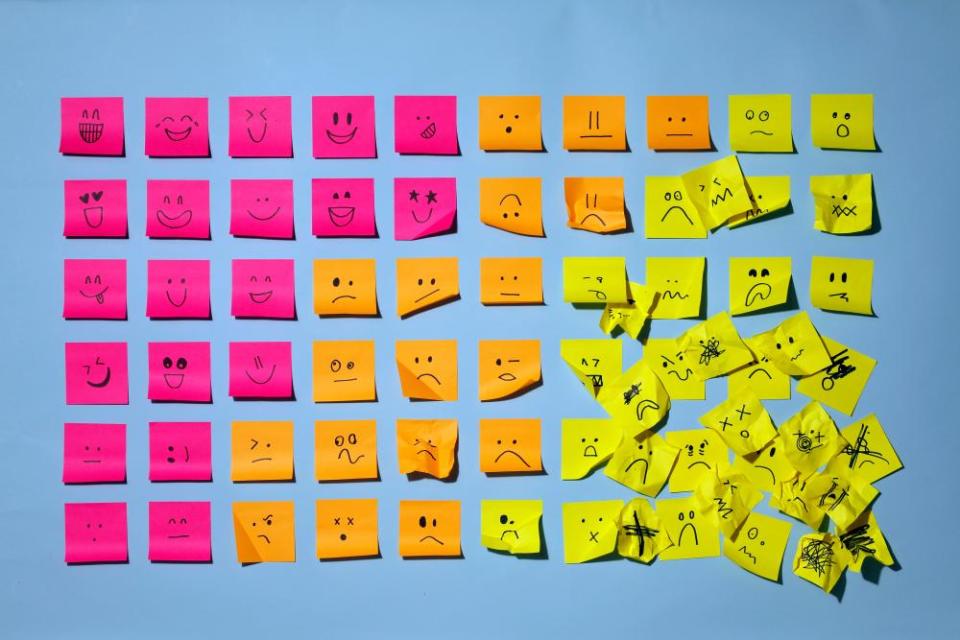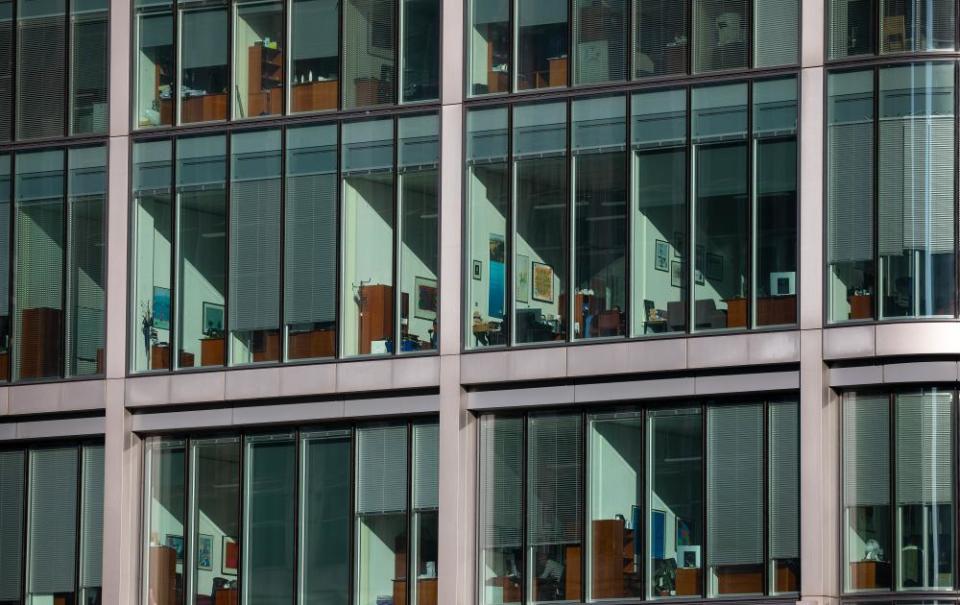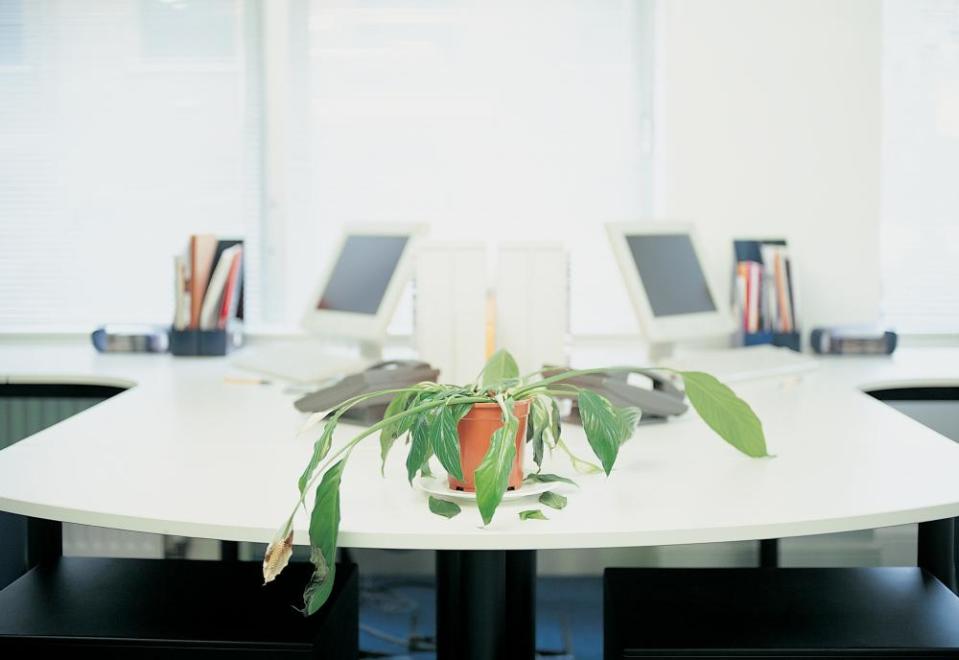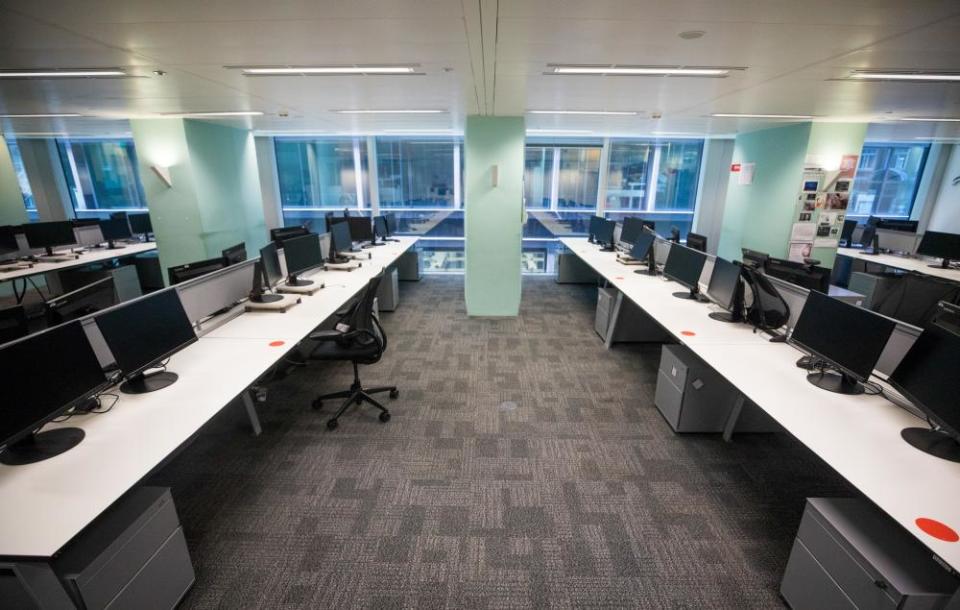Another day not at the office: will working from home be 2020's most radical change?

There’s a man sitting at the first-floor window of the house that lies on the other side of my back fence. It’s early August, the weather is sweltering, and his window is wide open. He’s talking on a hands-free phone, laughing in that ingratiating manner that suggests a large payday is at stake. He speaks in a fashionable sales patter that sounds similar to real conversation, but crucially isn’t, and he’s practically broadcasting his pitch to the neighbourhood. WTF? I want to shout, but I already know the answer: WFH.
With the exception of Covid-19 itself, working from home has been the big story of 2020. I’ve been home-based for more than 20 years and for most of that time, before my neighbour began advertising his WFH status, I was a local exception, left to my own devices in tranquil isolation. No one was much interested in the emotional dynamics of my daily work regime. But since the lockdown emptied the nation’s offices, it’s become a national topic of conversation.
Despite the government’s attempts to encourage white-collar workers to return to their workplaces, the stay-at-homes have continued to stay at home. Last month it was reported that only 34% of British white-collar workers had returned to the office, compared to 83% in France, and an average of 68% among major European counterparts. This month schools reopened but so far there has been no parental stampede back to the workplace.
That resistance is partly down to concerns about the virus and confusion about conflicting government messages – if it’s not OK to see more than five friends, how is it OK to be around 20 colleagues? But it has also brought into focus a general dissatisfaction with the nine-to-five grind. A lot of people have realised that they have had enough of commuting, of office politics, the banality of open-plan offices, and the tyranny of crayfish and rocket sandwiches. It’s led to a belief that something more profound and long-lasting is under way, and raised fundamental questions about how we see work and where we do it.
If you can work from home, for instance, does it matter where home is? Heather Trainer (not her real name) has taken remote working to its logical conclusion. A 57-year-old university administrator, she spent the lockdown working in the flat she shares with two friends – both of whom were away. She rather enjoyed the freedom and space that her isolation brought her.

Then her friends returned and everything began to feel a little cramped and difficult. So she decided to visit a friend in Crete, where she has remained for the last couple of months, with plenty of space and the beach not far away.
“You do have to manage the heat,” she says, mentioning that the temperature is 32C. “But I’m not complaining.” Not wishing to provoke ill-feeling among her colleagues, she hasn’t “advertised” her whereabouts. Only her immediate team knows where she is.
“If I’m on a meeting with a wider group of people,” she explains. “I blur the background or use a photograph. I get the feeling that with Covid-19 I’m supposed to be more bunkered down.”
Her boss was “a bit taken back” when she presented her plan, but wasn’t able to come up with any prohibitive objection. Her employer’s concern, she says, was that while it may be acceptable in her case, “what would it mean if everyone did it?” “It’s definitely something to be considered,” she concedes.
Remote working changes not just our understanding of a working community and the company ethos, but also our very concept of physical reality. Suddenly, to misappropriate Gertrude Stein, there is no there there. But if there is no shared space, what’s to stop employers following the example of many customer-care call centres, and employ much cheaper staff based in the developing world?
A traffic light system shows whether he or any of his colleagues is busy: a red light for occupied, green for free
At the moment, stuck in the groundhog day of socially distanced uncertainty, few are thinking that far ahead. However, just as experts have been predicting a viral pandemic for many years, so too have other experts been forecasting the transfer to remote working.
Back in 1973 a former Nasa engineer named Jack Nilles wrote a book arguing for remote work as a means of relieving traffic congestion. Entitled The Telecommunications-Transportation Tradeoff, it was not exactly a bestseller. But it planted a flag for staff dispersal despite the obvious limitations of technology at that time.
It would be another two years before the term “personal computer” was coined, and another decade before affordable and easy-to-use home computers came on the market. Even then the necessary technological infrastructure – the internet, emails, mobile phones – were in their infancy. But by the 1990s working from home was a much more feasible ambition for a growing number of the workforce.
Nonetheless only a small percentage did WFH. By 2001, 678,000 people were working mainly from home. Last year the figure had climbed to 1.7 million, out of a workforce of some 32.6 million (about 4 million were working sometimes from home). Come the lockdown and more than 46% of people in employment took to WFH. In London the figure was just above 57%. The age of remote working had finally arrived.
One of those remote workers is William McCarthy (not his real name), a 40-year-old public servant employed by a large London concern “to liaise,” as he puts it, as vaguely as possible, “with a number of other public bodies”.
For McCarthy remote working has not proved to be the great personal liberation that it’s sometimes trumpeted to be. He’s another who lives in shared accommodation, which has meant that he has been claustrophobically confined to his bedroom. It’s also the room in which he spends leisure time online.
“What I was doing during working hours resembled very closely what I was doing in non-working hours, which was sitting in front of a laptop. The activity may have been different but it was quite difficult to achieve any psychological separation because the physical activity was pretty much identical.”
Of course work has been seeping into the supposed sanctuary of the home for some time now. Many businesses expect their employees to respond in out-of-work hours to urgent emails, particularly if they come from other time zones. McCarthy says that he knows people who access work emails at 2am.
Sometimes he feels the world has been reduced to the 10 x 7in dimensions of his laptop screen and the barrier between work and home is lost.

“It’s easy to allow work to invade your imagination,” he says. “I keep very strict office hours. I don’t log on before 9am and I log off at the end of the day.”
But while he is logged on, he’s expected to cram more in. It used to be that he would travel around town to different meetings. Now they’re all conducted on Zoom, one immediately after the other. “So you can just go from meeting to meeting all day with no time to reflect on what you’ve just heard,” he says. “I find that very challenging.”
Efficiency gains are hard to quantify in these circumstances – as many of us could testify, more meetings do not necessarily mean greater productivity. And as with so many aspects of our working lives, productivity is the key corporate issue. It’s also the reason that the spread of remote working has, until the coronavirus, moved so slowly.
The suspicion has long held that working from home is really a euphemism for taking it easy or, more specifically, nursing a hangover. Many industries and companies have preferred to have their workers where they could see them.
Back in 1999, I decided that I wanted to work from home. At the time it was not possible to do so and remain a staff member, so I became a contract worker. Perhaps not the wisest move, given the choppy economic waters newspapers were about to enter, but I was a new father and I enjoyed the liberation from the office. Then came the cruel twist – a couple of years later, the rules changed and staff writers could work from home.
But if old media became more flexible, some new media organisations took a more rigid line. In 2013 Yahoo chief executive Marissa Mayer banned remote working at the internet giant. In order “to become the absolute best place to work,” she explained, “communication and collaboration will be important, so we need to be working side by side. That is why it is critical that we are all present in our offices.”
Apparently Yahoo’s network logs showed that remote employees spent more time logged off company servers than those in the office. An efficiency-boosting initiative operates at the organisation for which McCarthy works. A traffic light system shows whether he or any of his colleagues are busy – a red light for occupied, green for free. If he doesn’t touch his keyboard for a few minutes, the light will turn amber, signifying his possible absence. After a while it goes grey, which means whereabouts are unknown.
“The purpose is to enable faster communication,” he says, but he thinks it adds to the “pressure to be seen to be working because there’s no other way but your output to indicate that you’re keeping your side of this home-working bargain. In a more punitive environment, it might feel quite oppressive.”
Research suggests that people do work differently when they are alone. For one thing they appear to be less likely to email a colleague. That seems counterintuitive because you’d think there would be more reasons to communicate through electronic mail if you’re not in the same building. But one study showed that engineers who shared a physical space were 20% more likely to stay in digital touch than those working alone.
We generally work 45 hours per week. The work of our hunter-gatherer forebears took up no more than a third of that
Again, staying in touch doesn’t always mean greater productivity. Shonagh Murray lost her job as an underwriter at the start of the lockdown, then found a job invoicing for a company in Cardiff that does outsourcing for the government. To get it, she had to pass two Zoom interviews and then one interview on the phone.
“It was obviously quite odd,” she says, “because you’re hyper-aware of what you’re saying but it’s intensified because you can see yourself in the corner of the screen, almost like a feedback loop.”
By the second week she was busy doing work she’d never done before.
“I shared a screen with my line manager and we’d go through how to process these invoices. But when no one is sitting next to you, it’s hard. You miss the nuance of things.”
She also missed a community of colleagues. “I found it very lonely and isolating,” she says. Although there was a group chat on WhatsApp, she didn’t know her fellow workers and their in-jokes, and that only left her feeling more alienated. Then she was told by her supervisor that she had to action 400 invoices a day.
“Is that feasible?” she wondered. “Is that reasonable? I didn’t want them to think I was slacking. If I was in an office, probably someone would have said 300 would be enough. I did 560. When you don’t have any distractions you sort of work all the time. Which is probably what the bosses want. But then you feel a bit burned out, because there are no natural breaks.”
So far the studies that have been conducted on WFH productivity since the lockdown have not been conclusive. As one British self-report study found, 18% of those consulted felt they were more productive, and 22% felt less productive.

Someone who is absolutely certain that she has been less productive is Nicola Palmer, a senior lecturer at the law faculty of King’s College, London. With her husband, a professor of international politics, she has three children – a four-year old and twins who are almost two.
“Working from home is an entirely different experience if you have children, particularly during the lockdown,” she says. It’s no coincidence, she notes, that there has been a marked decline in submissions to journals from early and mid-career women.
Palmer and her husband strictly and equitably divided childcare, but it made little difference. “The capacity to have that space for reflection has been severely constrained,” she says. “The possibility of doing sustained intellectual work was removed. Research or writing has been very difficult.”
The lockdown created a yearning for an idealised past… cities have come to be seen as dysfunctional and unhealthy
Without the responsibilities of campus life, academic friends of hers without children have spoken of an outpouring of writing. In return, Palmer and her husband have offered anecdotes about looking after the children.
One of the things that drew her to academic life in the first place was its flexibility, that it was possible to move work quite smoothly between the office and home. And she believes that the pandemic has accelerated trends that were already under way. There will continue to be more online teaching, she says, while arguing for the advantages of in-person tutorials and the face-to-face meetings.
“We would lose a lot if we lost the physical space of the university,” she cautions. “One of the things it should fundamentally change is the amount of international travel. I don’t think we can flit around the world as an elite any more attending conferences.” The webinar, then, is here to stay.
There are also other underlying developments in the culture of work that the move to home seems likely to hasten. Since the advent of personal computers, white-collar jobs have grown to look more alike, as everyone ends up staring at the same kind of computer screens. And because homes are mostly similar and, critically, private, WFH has even removed the differentiating quality of the office, further blurring professional and personal identities.
In his new book Work: A History of How We Spend Our Time, the anthropologist James Suzman points out that throughout the 19th and 20th centuries the work we did formed the bedrock of our identities. We are, as it were, what we do.
There is an obvious public and imitative element to our work identities, and the personas we build on them, that are inevitably weakened if people are out of sight at home. If the presiding professional philosophy since the Victorian era is that the more we work, the more we realise our personal “potential”, the next question is what effect will a less visible identity have on our appetite for work?
Although the advent of a radically shortened working week has been predicted for a century or more, the time we devote to work, including commuting, has remained stubbornly around the 45 hour per week mark. Suzman estimates that the work of our hunter-gatherer forebears took up no more than a third of that, which makes our prehistory appear like a prelapsarian idyll.
The lockdown created a yearning to return to a less frenetic time, and for many it proved, in spite of the death toll and health anxiety, to represent a kind of mass exodus from the rat race, an escape to an idealised past.
In this romanticised past, the countryside – historically the scene of backbreaking agricultural work – represents freedom and leisure. By the same token, cities have come in recent months to be seen as dysfunctional and unhealthy. In Metropolis, his history of the city, Ben Wilson writes that at the beginning of the 20th century “the traditional city was a place of pessimism not hope”.
As he argues, that changed towards the end of the last century, when cities came back into fashion. All the major recent infrastructure initiatives of recent times – Crossrail, HS2, the “northern powerhouse” – have been predicated on urban expansion. An urban business model saw the regeneration of inner cities by making them more appealing to skilled workers. It’s the cafe culture principle, by which rundown industrial areas have undergone an artisanal makeover, followed by gentrification, and intense commercialisation.
But now, with all the recent social restrictions and distancing, that model is under threat. As Trainer says: “Under normal circumstances I really enjoy living in London but a lot of the things I enjoy doing in London have been diminished.” Cafe culture doesn’t work without cafes, and cafes need customers. One recent survey found that 88% who worked at home during the lockdown want to retain some capacity for doing so: those customers are in no great hurry to return.
If they don’t, something less tangible but more significant than cafes will be lost. In an opinion piece for the New York Times last month, the comedian Jerry Seinfeld took issue with the idea of remote working: “Everyone hates to do this. Everyone. Hates. You know why? There’s no energy. Energy, attitude and personality cannot be ‘remoted’ through even the best fibre optic lines.”
As much as I could do without my neighbour’s remoting, Seinfeld is right about the energy. It’s the lifeblood of great cites. But the genie of WFH is out of the bottle, and the early signs are that, no matter what Boris Johnson and his cabinet colleagues say, it isn’t going to go back in again.

 Yahoo News
Yahoo News 